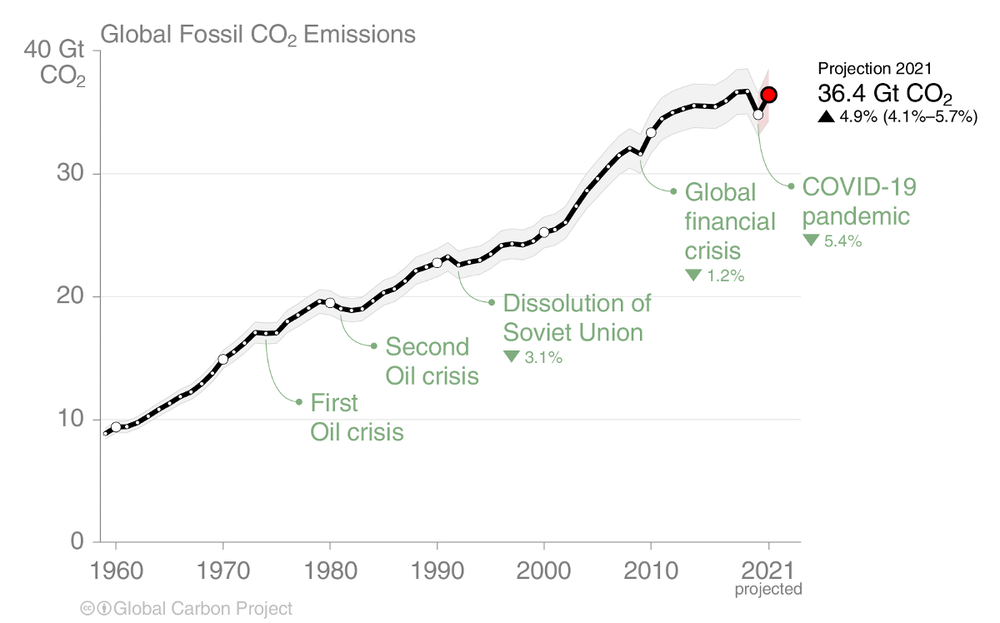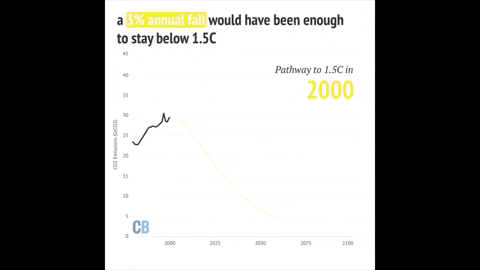Global carbon emissions rebound to pre-pandemic levels after unprecedented drop in 2020 – “The fast recovery in CO2 emissions, following last year’s sharp drop, should come as no surprise”

By Pep Canadell, Corinne Le Quéré, Glen Peters, Pierre Friedlingstein, Robbie Andrew, and Rob Jackson
3 November 2021
(The Conversation) – Global carbon dioxide emissions have bounced back after COVID-19 restrictions and are likely to reach close to pre-pandemic levels this year, our analysis released today has found.
The troubling finding comes as the COP26 climate talks continue in Glasgow in a last-ditch bid to keep dangerous global warming at bay. The analysis was undertaken by the Global Carbon Project, a consortium of scientists from around the world who produce, collect, and analyse global greenhouse gas information.
The fast recovery in CO₂ emissions, following last year’s sharp drop, should come as no surprise. The world’s strong economic rebound has created a surge in demand for energy, and the global energy system is still heavily dependent on fossil fuels.
Most concerning is the long-term upward trends of CO₂ emissions from oil and gas, and this year’s growth in coal emissions, which together are far from trending towards net-zero by 2050.
The global emissions picture
Global CO₂ emissions from fossil fuels dropped by 5.4% in 2020, compared to the previous year. But they are set to increase by about 4.9% above 2020 levels this year, reaching 36.4 billion tonnes. This brings them almost back to 2019 levels.
We can expect another 2.9 billion tonnes of CO₂ emissions this year from the net effect of everything we do to the land, including deforestation, degradation and re-vegetation.
This brings us to a total of 39.4 billion tonnes of CO₂ to be emitted by the end of this year.

The fast growth in emissions matches the corresponding large increase in energy demand as the global economy opens up, with the help of US$17.2 trillion in economic stimulus packages around the world.
CO₂ emissions from all fossil fuel types (coal, oil and natural gas) grew this year, with emissions from coal and natural gas set to grow more in 2021 than they fell in 2020.
Emissions from global coal use were declining before the pandemic hit in early 2020 but they surged back this year. Emissions from global gas use have returned to the rising trend seen before the pandemic.
CO₂ emissions from global oil use remain well below pre-pandemic levels but are expected to increase in coming years as road transport and aviation recover from COVID-related restrictions. [more]



One Response
Comments are closed.